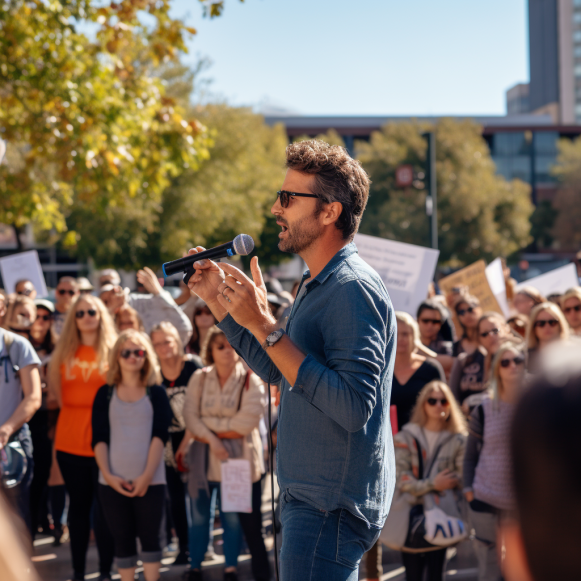Mathews: VR took me to the world’s past — and to its future

A way everyday people can deliberate and vote on what gets lost, what stays, and what gets built
When Konrad Adenauer approached me in the Old Market, I was taken aback.
Sure, I was in Adenauer’s hometown of Cologne, Germany. But I never expected to see the German republic’s first postwar chancellor, let alone get a wave from him.
Not to mention that he died six years before I was born.
But, thanks to TimeRide, a virtual reality tour, I had traveled back in time to 1926, when Adenauer was mayor of Cologne.
I’m not a big fan of tourist attractions, which TimeRide — which also has locations in Dresden, Munich, Berlin, and Frankfurt — is full of. But my colleagues at a democracy NGO in Cologne suggested I give it a shot. I’m relieved I did.
Because TimeRide raises questions about how communities remember difficult pasts and envision democratic futures.
It is not a novel idea to use virtual reality to document horrors. To aid in the prosecution of Nazi war criminals, the state of Bavaria created a virtual reality version of the Auschwitz-Birkenau concentration camp. And virtual reality has emerged as an important tool for commemorating genocide, most notably in the recent Illinois Holocaust Museum and Education Center exhibition The Journey Back.
And virtual reality (VR) represents an important form of historical preservation by re-creating lost or damaged structures and spaces, such as ancient sites destroyed during warfare in Syria and Iraq.
However, such VR projects have raised concerns. Is it possible to have equal access to history if it is tied to an expensive technology? Could “virtually real” depictions of concentration camps or warfare compel people to confront old traumas — or create new ones? Could virtual reality technologies be used to spread false narratives that incite violence or undermine democracy?
These dangers are real, but so is the technology’s ability to create memory. TimeRide succeeds because it does something fundamental: it demonstrates the extent to which human actions can devastate our communities.
TimeRide is more haunting than some war and Holocaust exhibits because it does not show you horrors. Instead, it takes you on a tour of interwar Cologne during the Golden Twenties. I was transported back to 1926 after paying my 24 euros, boarding the stationary streetcar inside an Old Market storefront, and donning the VR headset.
This is visible and palpable history. Vibrations and airflow gave the streetcar a sense of motion. Over the course of 45 minutes, the ride recreates 2,000 buildings and over 3,000 people, including Mayor Adenauer. You make your way through several neighborhoods, including the Jewish Quarter, before arriving at a Carnival parade. The city is filled with brightly dressed people and upbeat music.
But the most powerful part of the ride is when you walk outside into the Old Market, adjust your eyes to the sunlight, and look around. Yes, the Rathaus — the old city hall — and Cologne’s famous cathedral are visible. Almost nothing else is left.
Only 26 of the 2,000 virtual reality buildings remain.
The rest was destroyed by humans. In 1933, the Nazis seized power, disbanded the city government, deposed Adenauer as mayor, and seized his home. What happened next is all too familiar: the Night of the Long Knives, Kristallnacht, the Final Solution, and World War II.
After TimeRide, I sat in the Old Market, taking in the city around me for the first time and realizing how fragile it is.
And I found myself wondering how we could use virtual reality to reconsider how we impact the world around us.
Imagine being able to take a boat through the Amazon in 1823, or putting on virtual snow boots to cross melted glaciers. Could we witness the destruction of indigenous communities in previous centuries? Could we go to Hiroshima and Nagasaki before the bombs went off? Could we return to Mariupol just two years ago, before the Russian military destroyed it?
Back in Los Angeles, I’d like virtual reality to transport me to the great neighborhoods we’ve demolished, such as Old Chinatown, which was demolished to make way for a train station, or Chavez Ravine, which was evacuated to make way for Dodger Stadium.
More than that, I’d like virtual technologies to show us alternative futures. This way, ordinary people can deliberate and vote on what is lost, what is retained, and what is built — and all power does not belong to those with the ability to destroy nearly everything visible.






